

Travelogue
Our Balkan Adventure: Part Two
Albania and North Macedonia
by Willlie Vergara
Prologue: It has been more almost 14 months now since Norman and I went to
the Balkans, so I will partly rely on the photographs to jog my memory about
this trip. Between those 14 months were many other out-of-town and
out-of-country trips that kept me away from my computer. Unlike Part One that
covered 4 countries, I will write about two countries this time. Part Three will
be our trip to last two countries in this voyage: Bulgaria and Romania.

Leaving the fjords of Montenegro on the way to
Albania
5. ALBANIA
In Part One, the reader must have already come to the conclusion that a Balkan road trip offers spectacular views of land and sea, mountains and islands, and lakes and rivers. In my experience as a frequent traveler, this road trip traversing eight Balkan countries is the most scenic ever. This was evident in the four countries in Part One. We will see this again in the rest of the four countries.
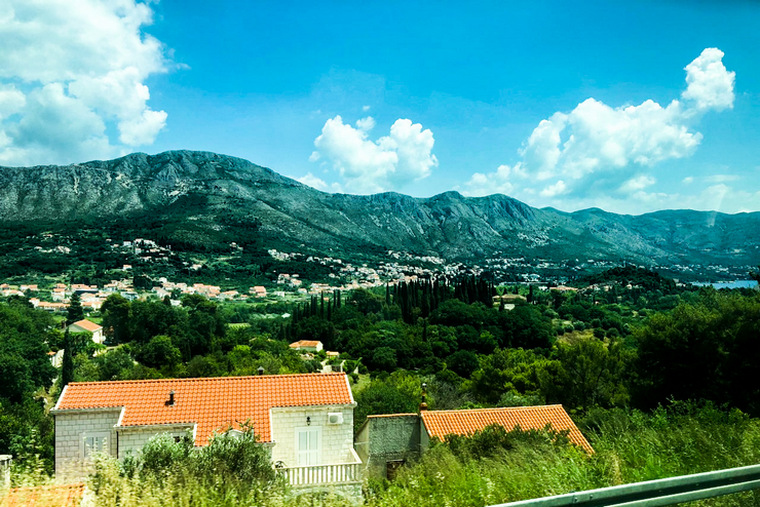
Spectacular landscape as soon as we crossed the
border of Montenegro
As for Albania, I was more impressed by the sites I saw inside the bus while traveling within the country compared to our two brief stopovers – first, a comfort break outside of the old city of Shkoder located near the border of Montenegro and Albania; and second at the country’s capital city of Tirana.
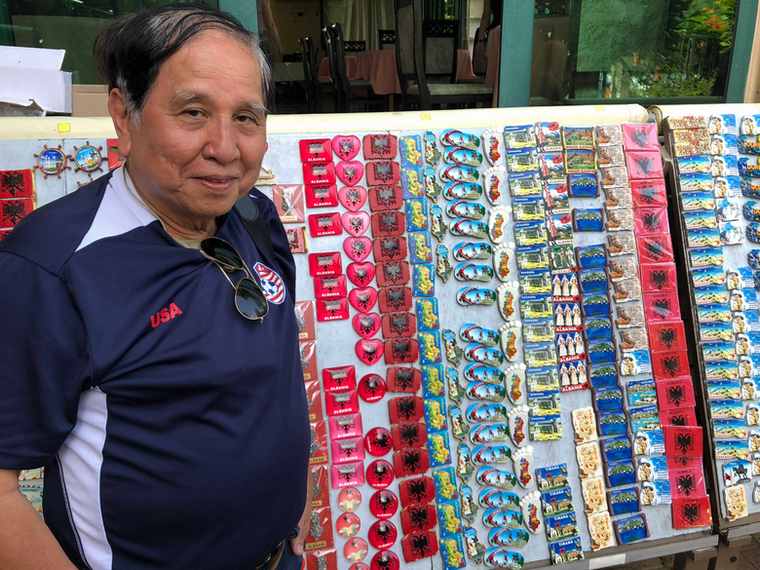
Right after we crossed the border of Montenegro, we
stopped over at Shkoder restaurant and gift shop.
This country of special interest to me because my son-in-law hails from this place. However, the itinerary would not allow us to see more tourist attractions like the City of Duress, its nearby beaches and the Albanian alps. It is a country on the Adriatic and Ionian Sea in the Mediterranean. (As an aside, my second to youngest grandson’s name is Adrion, a combination of the two seas.) Albania shares borders with Montenegro, Kosovo, Macedonia, Greece, and Italy.
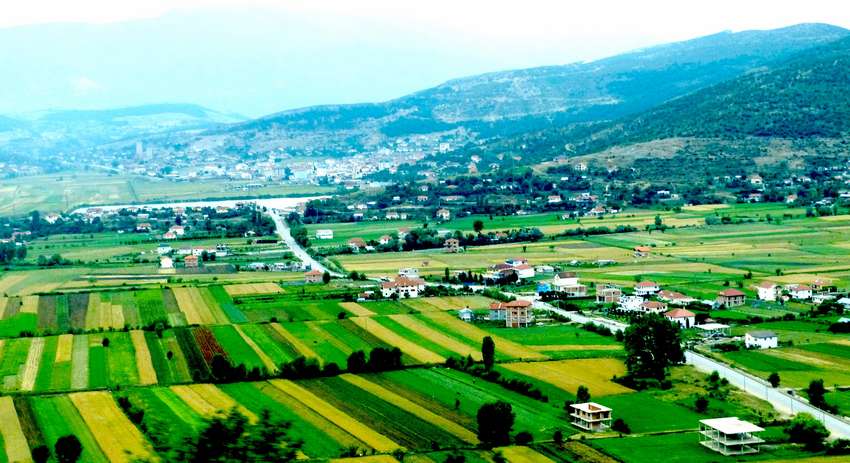
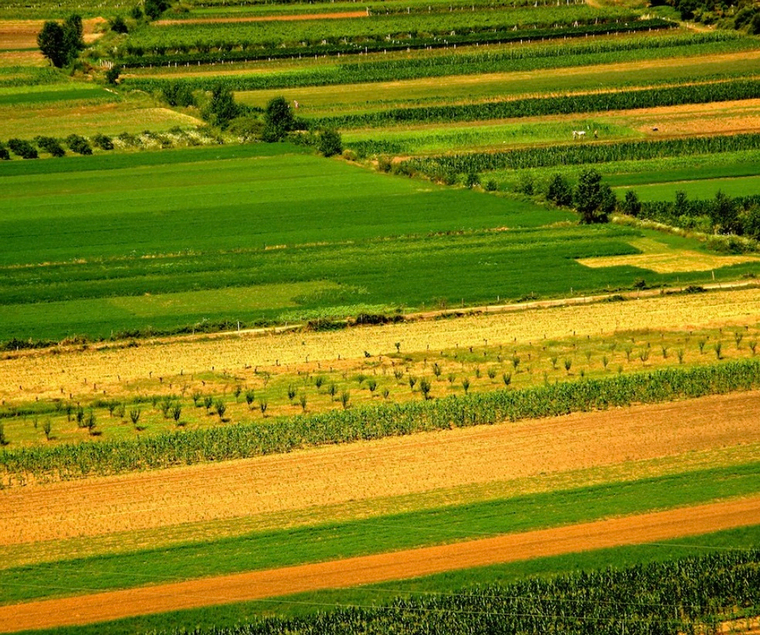
Spectacular Albanian landscape
Albania has a population of about 3 million and a land area of about 29,000
square kilometers. Just for comparison, the Philippines has a population of 108
million and a land area of 300,000 square kilometers. Comparing population
density of both countries, Albania has 100 people per square kilometer compared
to 360 in the Philippines. It should be noted that there are more Albanians
living outside of their own country, more than a million and a half living in
Kosovo, and about two million mostly in various European countries. An estimate
total of 200,000 Albanians live in America.
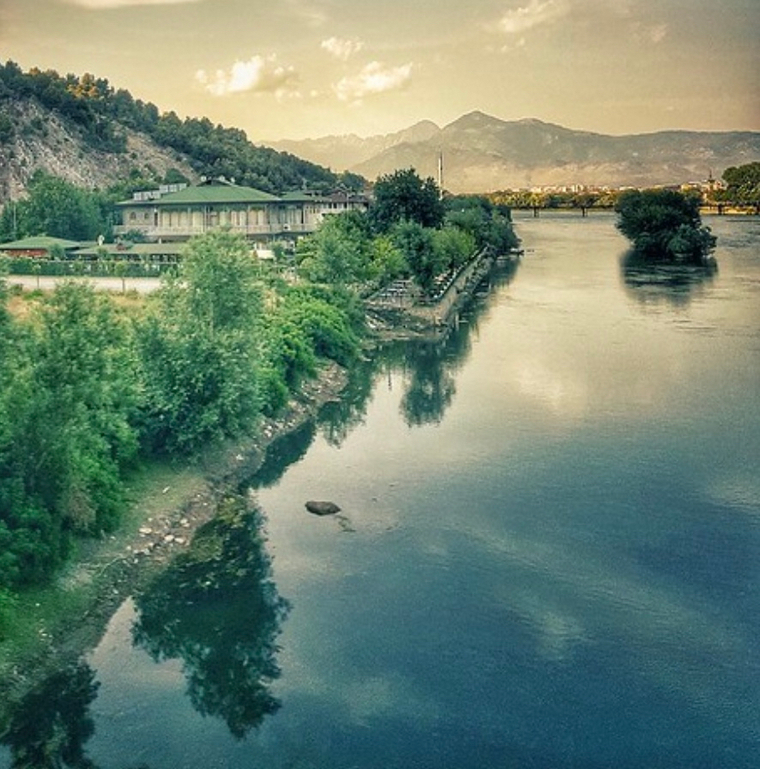
Beautiful scenery on the way to Tirana, the capital
of Albania
Ancient Albania was populated by Illyrians, Thracians, and Ancient Greek tribes. It was annexed in the 3rdcentury by Romans. Then it became part of the Byzantine Empire in 1190; conquered by French King Charles I in the 13thcentury; then by the Ottomans in the 15thcentury; invaded by Italy in 1939 and became a Nazi protectorate in 1943. Shortly after that, in 1944, Communist leader Enver Hoxha took over many believe he created havoc under his oppressive, authoritarian rule. For the next several decades, Albania aligned itself first with Russia (until 1960) and then China (until 1978). Finally, in 1991, the people were able to end several decades of strife when they once again declared independence and established a multi-party democracy. (Source: Wikipedia) Put briefly, Albania shares a lot of history with many Balkan nations.
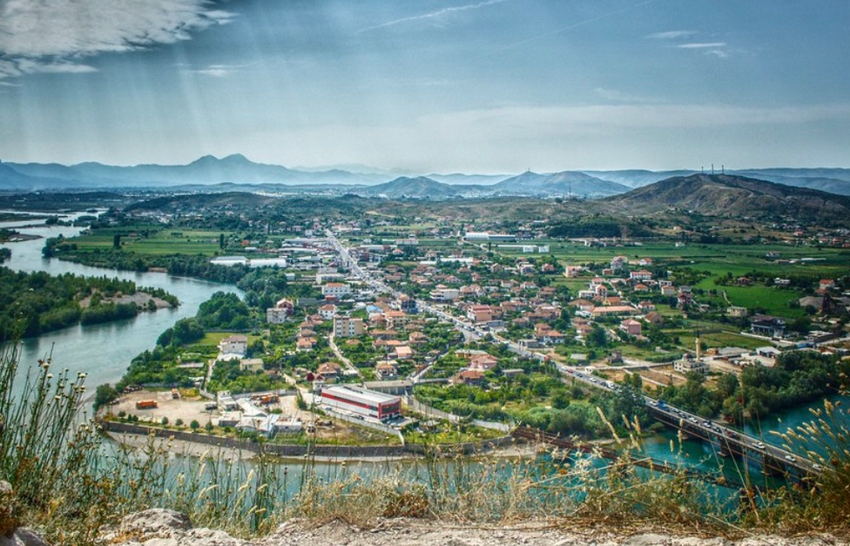
Winding rivers, valleys and mountains punctuate the
scenic journey towards the capital
5.1 Tirana
One would easily know that we have reached the capital of Tirana by the slowing (though light) traffic, and by the buildings and commercial establishments lined up along major thoroughfares. This is the only city in our Balkan adventure that has some similarities with some urban centers in Metro Manila. Not in the likes of Makati though, where high rise buildings dominate the cityscape.
Tirana is the only city in this trip that has some
similarity to some suburban areas in the Philippines.
Tirana is the only capital among all the Balkan countries without a McDonalds. It is the heart of the country with a vibrant and youthful atmosphere although unlike most capitals, there are not too many people even at the city center. There are but a few remnants of Communist regime. Very visible are the primary colors of the surrounding buildings.
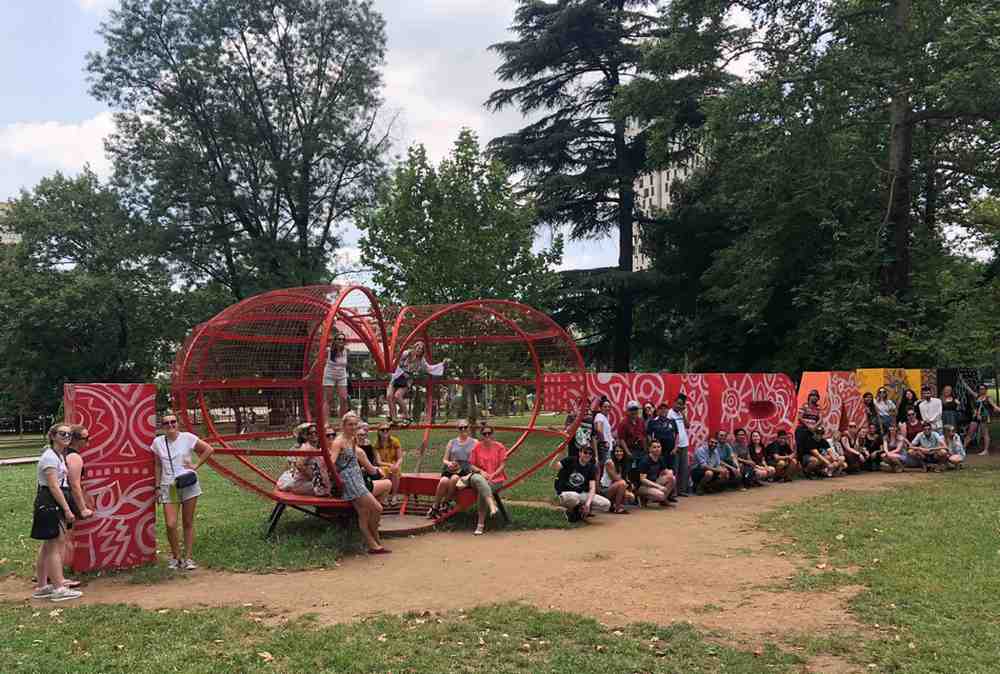
This is all 40 of us taken at a park in Tirana and is
our last picture as a large group. We would later go on different directions
upon leaving our hotel in Macedonia.
From 1944 to 1992, Albania was governed under a harsh Communist ideal that modeled itself after Stalinism. Landmarks such as the pyramid of Tirana still recall darker days.The out-of-place pyramid was built as a museum in honor of Enver Hoxha, a former Albanian leader who furthered the ideals of Stalinism for decades after the Russian dictator died. he building began being looted for materials and covered in graffiti, leading to its current state of dilapidation.
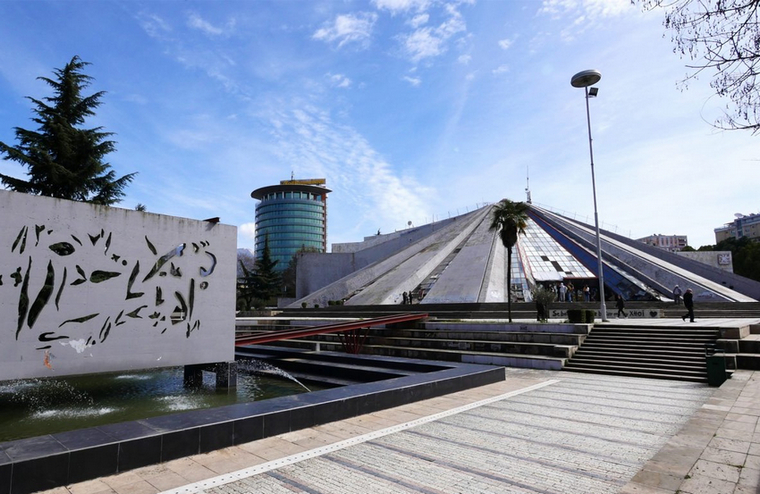
This pyramid is a remnant of a Communist empire that
never was. It is a relic of a turbulent past,
and there are current debates whether to restore it or tear it down.
Considered as one of the poorest countries in the region, the economy is finally improving owing to better governance. One of the usual sights in the capital city of Tirana is the presence of many luxury cars, especially Mercedes Benz. The information I’m getting is that some Albanians have the tendency to want to appear affluent. Others theorize that this proclivity must have been a result of decades of isolation under Communism where only party leaders were allowed to have cars.
Mercedes Benz seems to be the favorite car in Tirana
The hands-down hero of Albania is Gjergj Kastrioti (1405-1468), otherwise
known as Skanderbeg, after Alexander the Great. He converted to Islam in his
youth but later embraced Christianity. For many years (1444-1466), he
effectively repulsed the Islam invasion and is known to have prevented the
spread of Islam in Western Europe, thus also becoming the hero of the Western
World. Albania’s major landmark, the Skanderbeg Square is named after him.
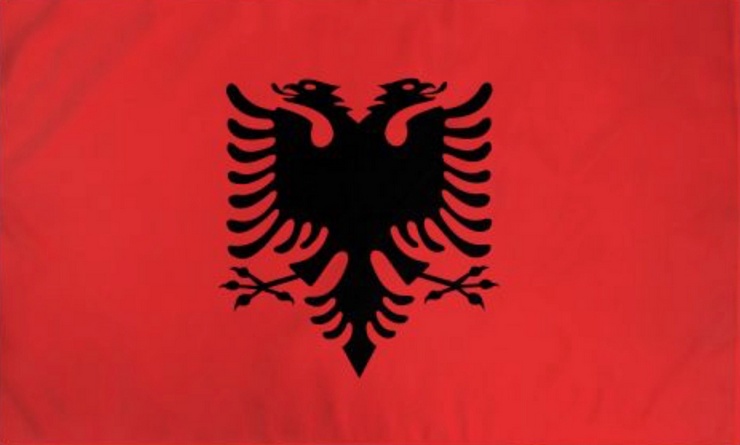
Kastrioti adopted the Byzantine double-headed eagle flag and is now the official flag of Albania.
The double-headed eagle had its roots in the Byzantine era.
The Skanderbeg Statue stands in the middle of the square. As an aside, the second name
of my youngest grandkid is Gjergj, after the Albanian hero.
Skanderbeg Statue shows a helmet adorned with a horned goat, and a legendary sword
so sharp that it could cut a person in half vertically.
Skandenberg Square
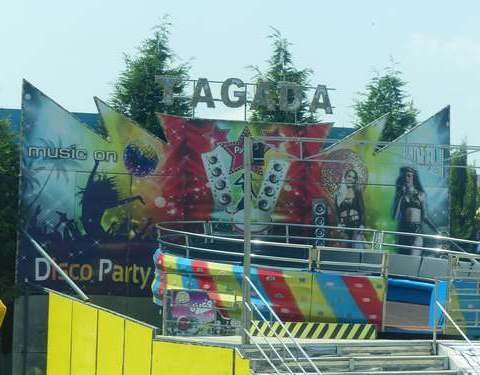
Norman and I spent much of our time at Skanderbeg Square
Aykut Gun, our tour leader, told us that Albanians are very good cooks. That
encouraged me and Norman to take our lunch at the center of town and order one
of Albania’s most famous viands. I truly enjoyed this meal, and it’s just too
bad that we would not have a chance for another Albanian meal as we had to move
on to the next destination.
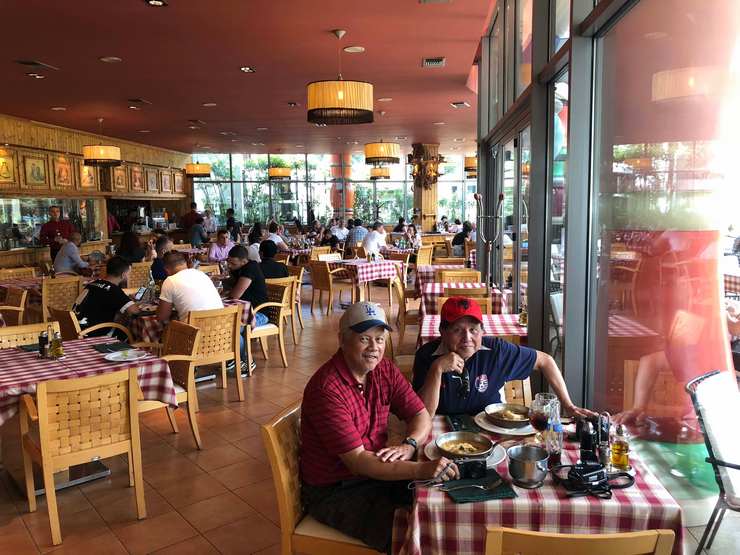
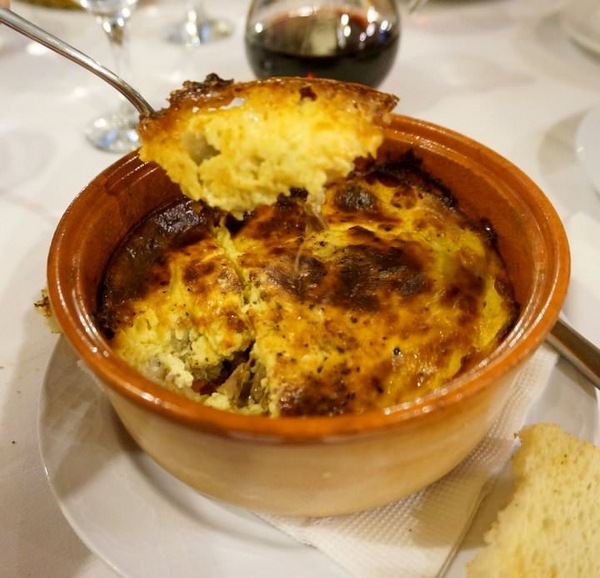
Upon suggestion of our tour leader, we went to this restaurant near the Skaderbeg Square
and ordered a Tave Kosi (lamb with yogurt and rice)
Albania’s heroine is Agnes Gonxha Bojaxhiu, later known world-wide as Mother Teresa of Calcutta, was born of Albanian parentage. Her birthplace, however, is Skopje, Macedonia and her residence was transformed into a museum. More on this as we get to the next country – Macedonia.
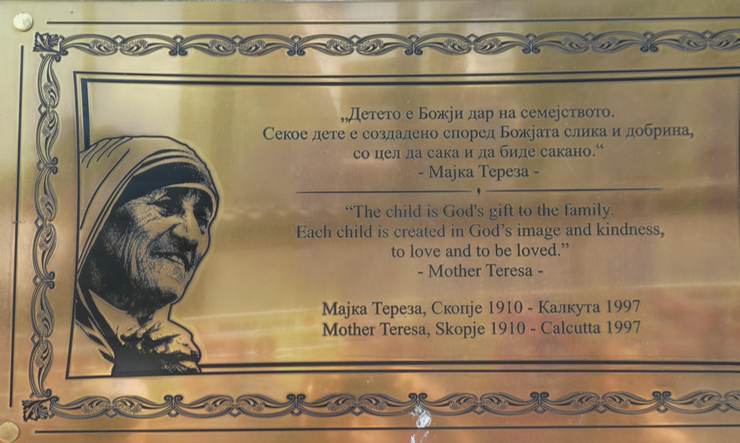
The
parents of Mother Teresa were both Albanians.
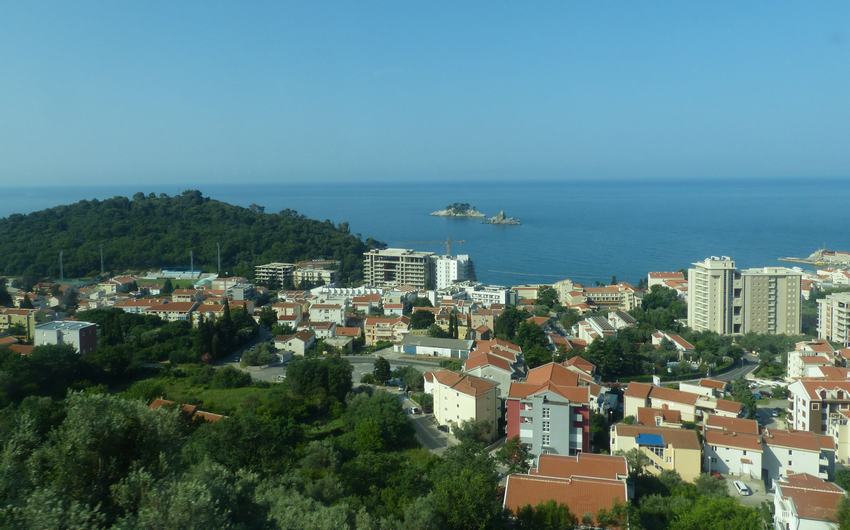
The trip from Tirana to North Macedonia is equally remarkable and picturesque.
6. NORTH MACEDONIA
Before this trip, I knew very little about Macedonia. What I learned in
my youth is that King Philip II and his son Alexander the Great ruled this
country, and that the young Alexander, under the tutelage of the great Greek
philosopher Aristotle, would “untie the Gordian knot “ that would eventually
lead to his numerous conquests in Asia.
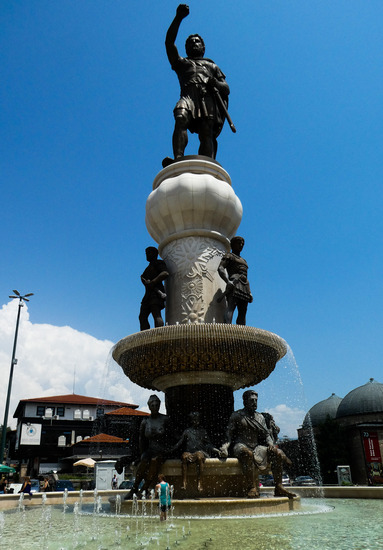
Monument of Alexander the Great
The country was recently renamed Republic of North Macedonia, 7 months after our Balkan Adventure. This change of name was an agreement finally reached after years of debate with Greece, being that the other half (southern) of the region is part of Greece. Macedonia is a landlocked country that was formerly under Yugoslavia, which is bordered by Greece, Bulgaria, Kosovo, Albania and Serbia. The flag was adopted in 1995 with a yellow sun at the center and 8 rays “representing the sun of Liberty”.
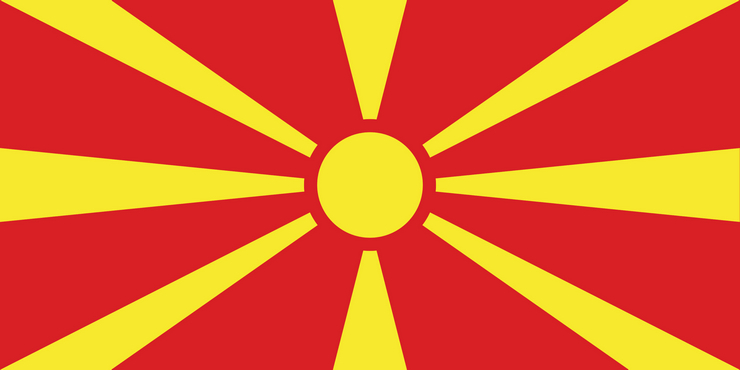
Flag of North Macedonia
Macedonia is actually the oldest
surviving name of a country in the whole European continent. The Ancient
Macedonians were Hellenes, and ancient Macedonia is today mostly in the Greek
region of Macedonia. Without this trip, I wouldn’t have known that this country
has so much to offer. It is certainly not the typical travel destination.
6.1 Ohrid
The first stop after we crossed the Albanian border was the Monastery of
Saint Naum. It is one of the more popular day trips from the capital city of
Skopje and even from Tirana. There are river springs nearby, and I saw people
swimming at beach of Ohrid Lake to the right of the entrance leading to a
leisurely and scenic half a mile walk towards the monastery.
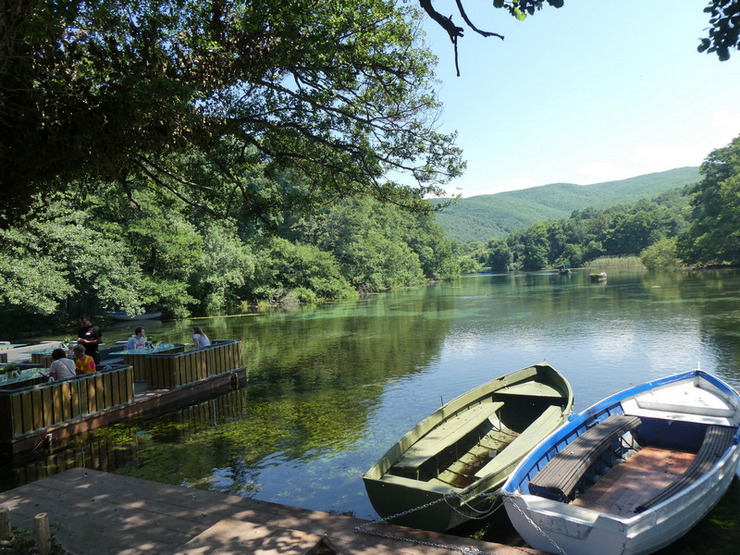
The walk towards the Monastery is marked by river springs and interesting sites
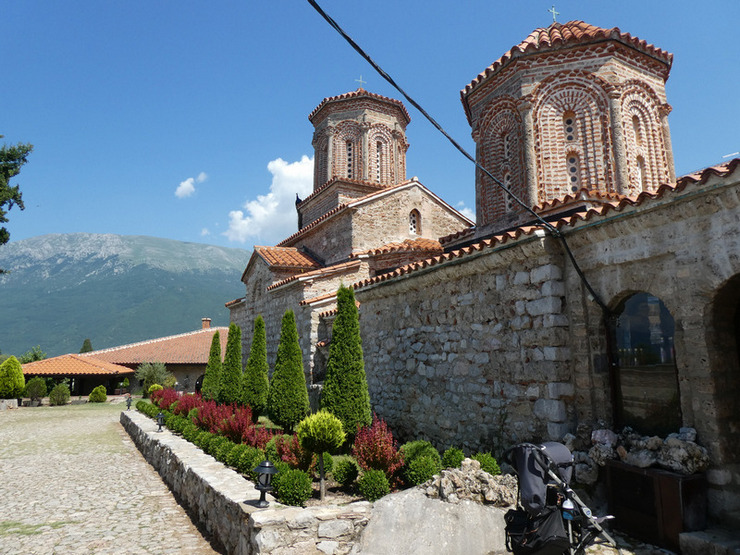
Monastery of Saint Naum
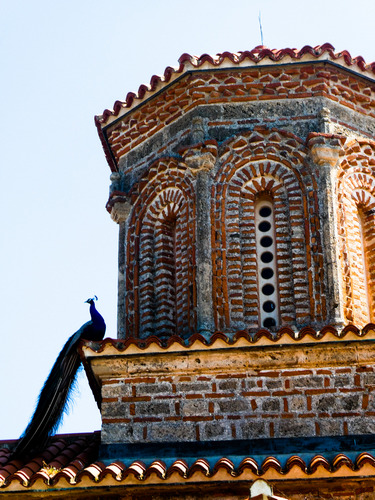
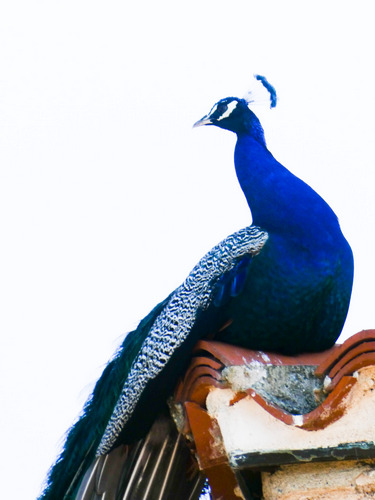
There are several peacocks inside the monastery
Unlike most Balkan countries, North Macedonia is without any ocean in sight. But
Lake Ohrid more than compensates for such absence and is an absolute beauty that
will captivate any tourist. It is one of the deepest and oldest lakes in all of
Europe, with a maximum depth of 940 feet with an area of 138 square miles. It is
almost 19 miles long and 9 miles wide. Part of it is shared with Albania,
although majority of the water is in North Macedonia.
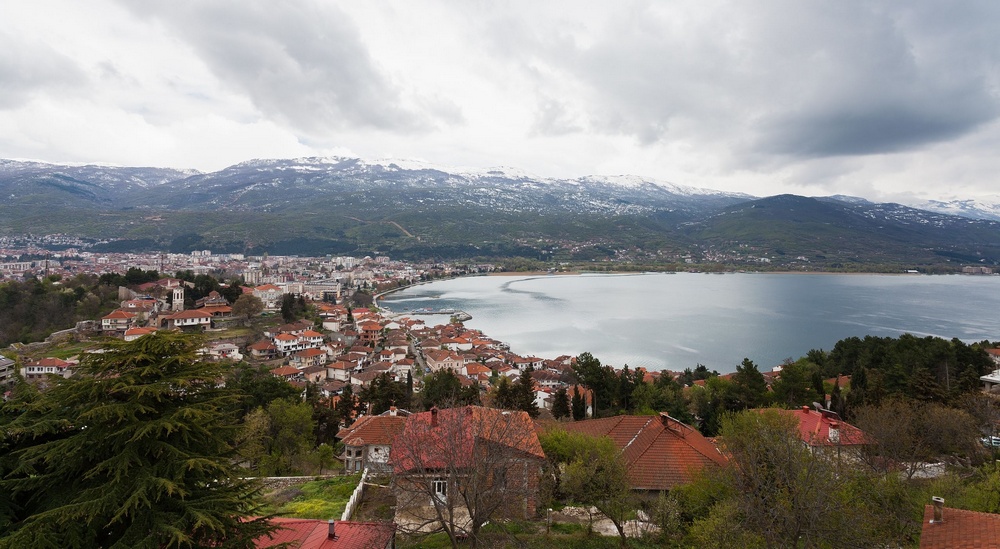
The beautiful Ohrid Lake offers a most spectacular scenery in this country
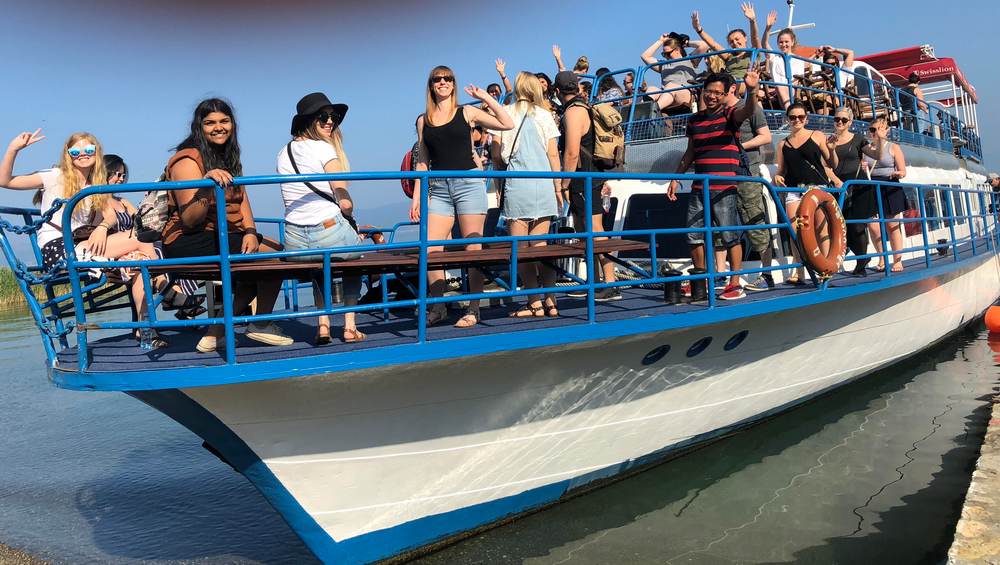
A fun activity – cruising at Ohrid Lake with everyone in
our group
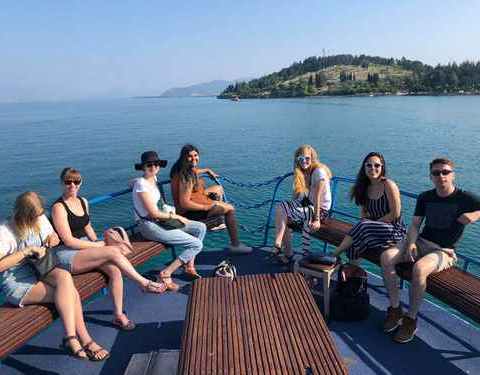
Me with friends aboard boat 6 pretty girls and a guy
On the hilly shores of the lake is the City of Ohrid. It is a small old city with churches dating back to the middle ages, and with houses mostly roofed with red tiles. Scholars say that it unites the Macedonian cultural heritage, and it is one of the most impressive places relating to Orthodox religious history. With a lot of churches and monastery complexes, it is the spiritual place of Macedonia.
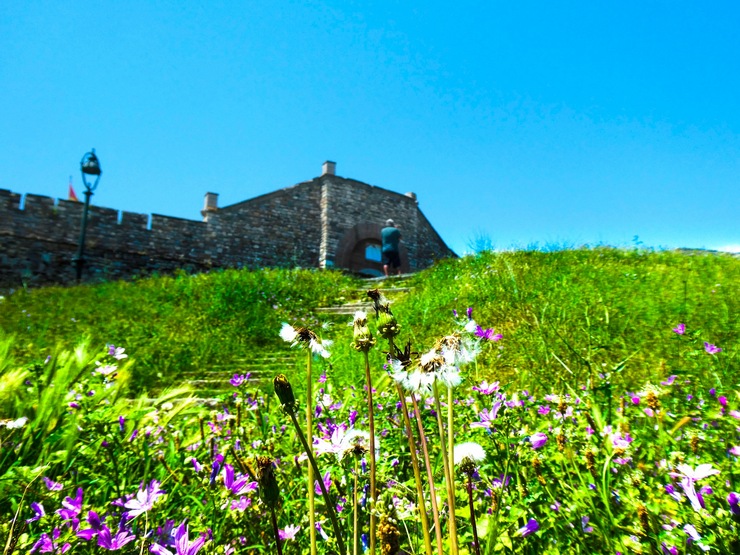
Ohrid’s most dominant landmark is a fortress that sits on the hilltop
of the old town. Known as Samuel’s Fortress
after the Tsar Samuel, the fortress was the capital of the First Bulgarian Empire at the end of the 10th century.
Our group went on a walking tour and
visited a nice church, Saint Sophia, with an architecture almost similar to
Saint Naum.
This cathedral was the seat of the Byzantine Empire in the region.
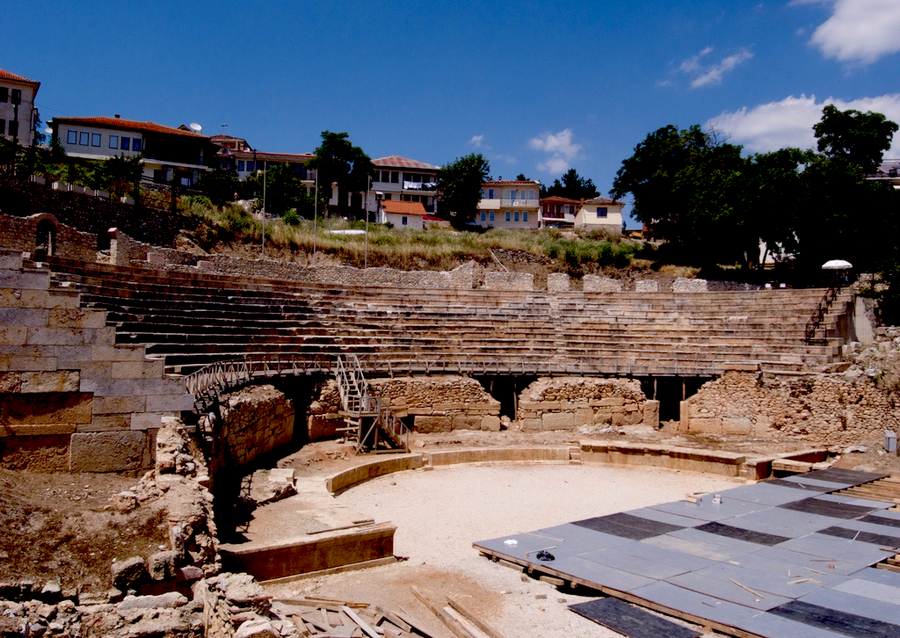
Further up the hill was an amphitheater like the ones we
see all over Greece.
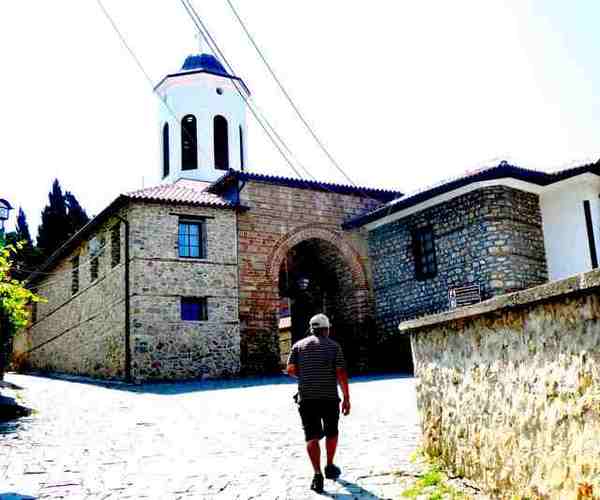
Norman and I went up the hilltop
towards the Mother of God Church.
The climb was difficult for me but not for Norman.
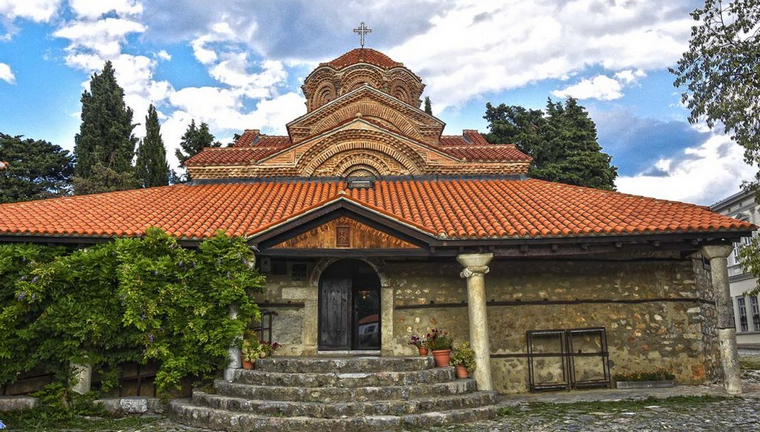
The architecture of the Mother of God Church
similar to most Orthodox churches in Macedonia.
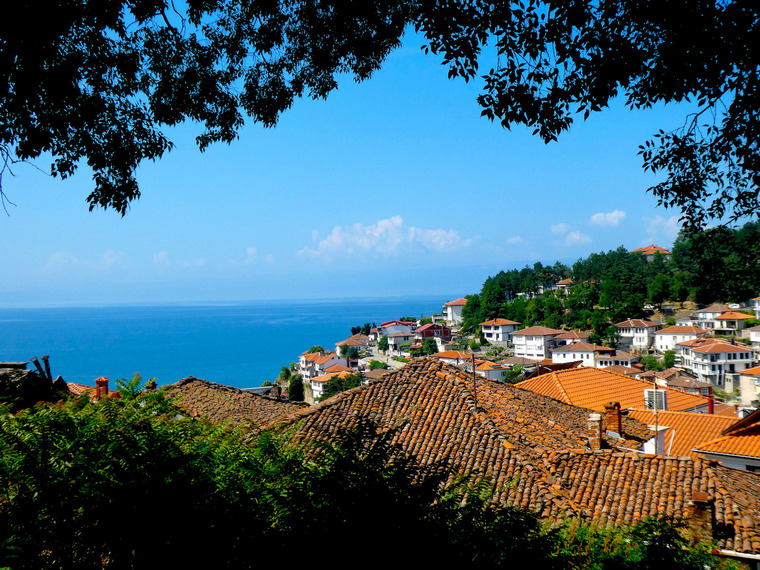
Built
in the 13th century, this church stands at the highest point of the city
overlooking the Ohrid Lake.
The City of Ohrid offers a lot of outdoor adventures as well. Bike rentals are available where tourists can enjoy the scenery of the lake and the nearby forest. There are also places for diving and swimming near historical landmarks. In short, one is able to do so many varied things without having to go very far from the city center.
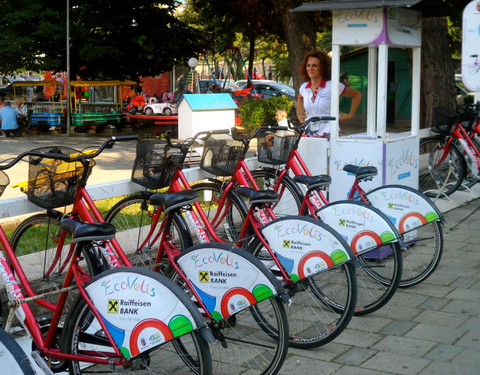
Bike Rental Restaurants along Ohrid shoreline
Part of my education in this adventure is about the Cyrillic Alphabet, which
is now used in the Balkan countries of Macedonia, Bulgaria, Montenegro, Serbia,
Russia, and some countries in the former USSR. The Cyrillic Alphabet was
developed by two brothers Cyril and Methodius, both born in Greece. They are
honored in many countries that use this alphabet, and in the city of Ohrid stand
their statues.
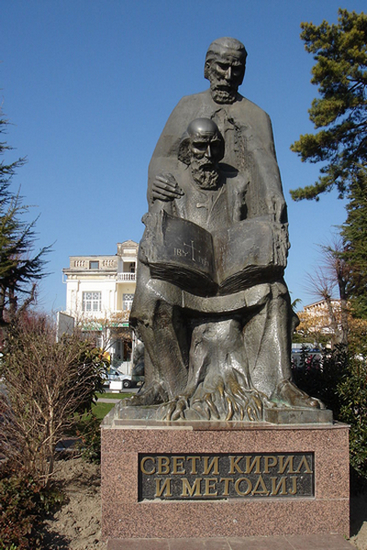
Statue of the brothers Cyril and Methodius
Cyril was canonized by Rome in late 1880s as Saint Cyril, but
was also considered as saint alongside his brother Methodius by the Orthodox
Church. Both were Byzantine Christian theologians and Christian missionaries.
Through their work, they influenced the cultural development of all Slavs, for
which they received the title "Apostles to the Slavs". After their deaths, their
pupils continued their missionary work among other Slavs. Pope John Paul II
canonized both of them as saints in the 80s.
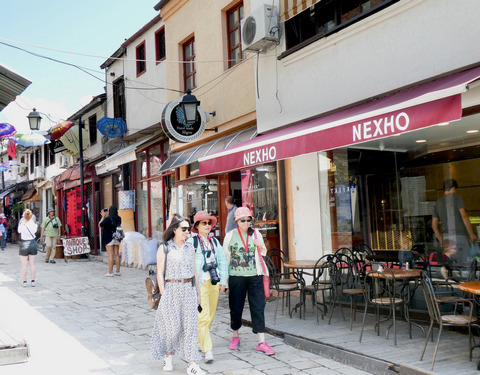
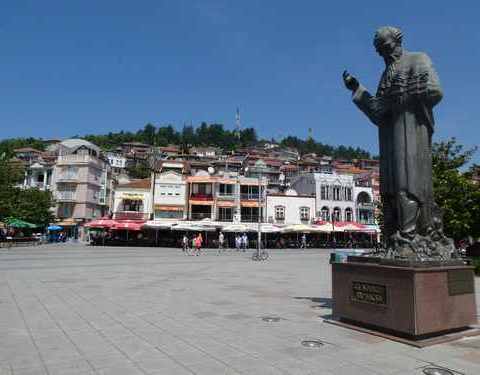
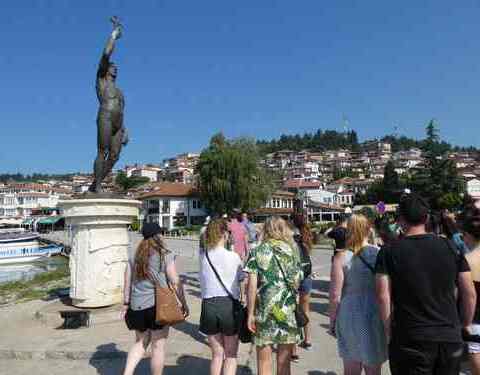
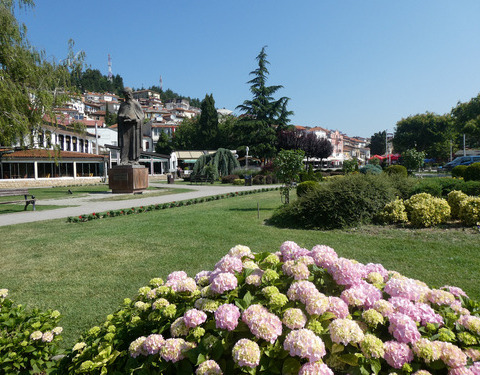
Walking
around Ohrid
6.2 Skopje
I did not even
know that the City of Skopje is the capital of North Macedonia. This city is a
massive and equally captivating metropolis. It has been a frequent venue of
international tournaments especially soccer, chess and beach volleyball. The
city is a testament of different eras in history – from the ancient times of
Alexander the Great to the architectural marvels of the Eastern Orthodox
Christianity to Ottoman architecture and through socialist modernism.
Functioning as the business,
administrative and educational hub of the country, Skopje is a small metropolis.
The infrastructure continues to rapidly improve with plenty of things to see,
all fitting tightly into a small radius.
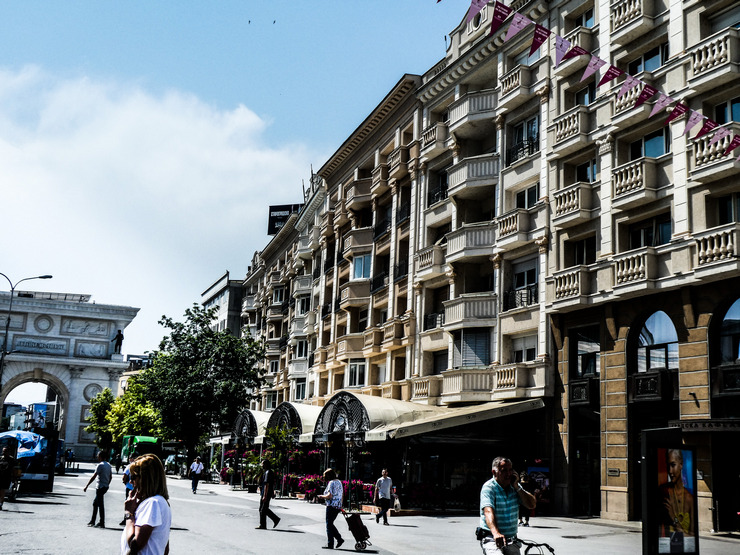
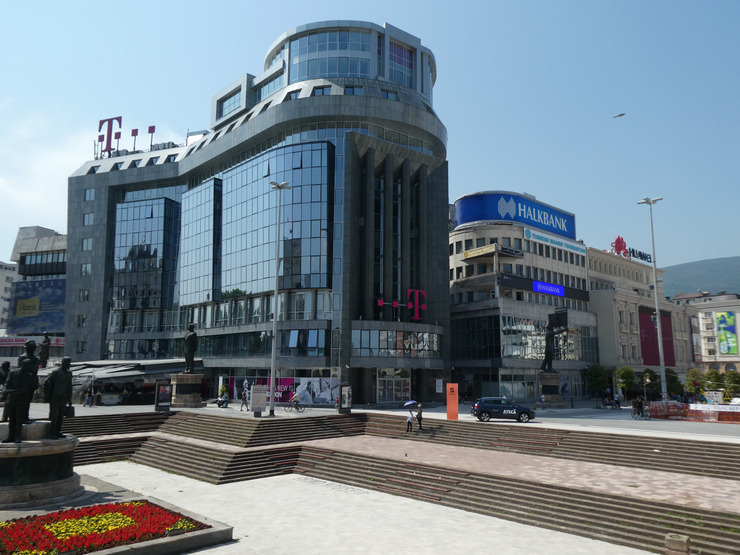
City Center of
Skopje
I have never seen so many monuments in one place. I couldn’t just believe my eyes with so many of these all around this Macedonian square. A blogger even said, “… no matter how hard this place tries to be something it is not, nothing really fits there.” I would later learn that the Macedonian government, in spite of many contrary views, spent several millions from 2014 in order to attract tourism. Another blogger wrote, “It did attract tourism, but for the wrong reasons.” After reading so many blogs leading to the same funny comments, I must now say “Yes, what we see here is, indeed, a chop suey of monuments.”
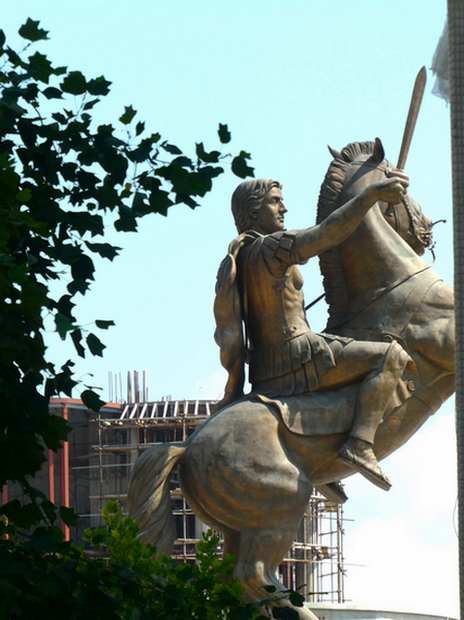
Formerly dubbed as “Alexander the Great”, this monument was renamed
“The Great Warrior”. The Macedonian government was just being politically
correct being that Greece is claiming Alexander the Great as their own.
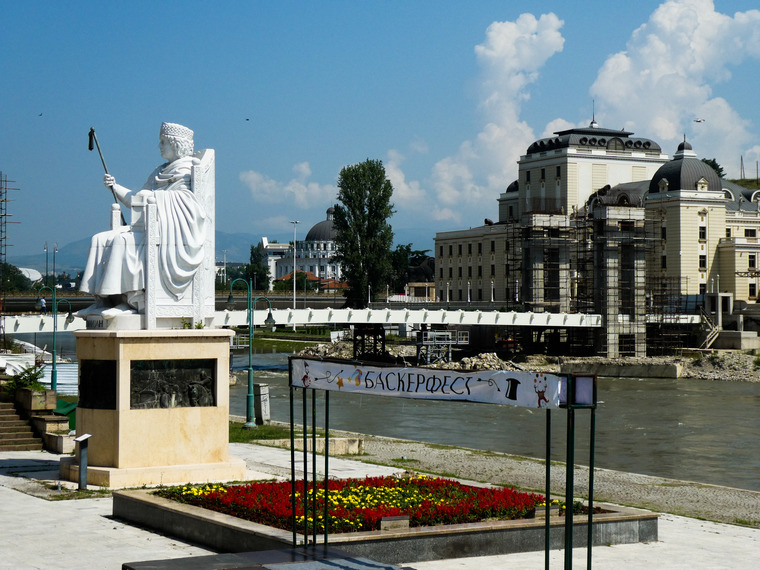
Monument of Justiniana Prima, aka the great Eastern Roman Emperor Justinian I, stands on a strategic location in the square.
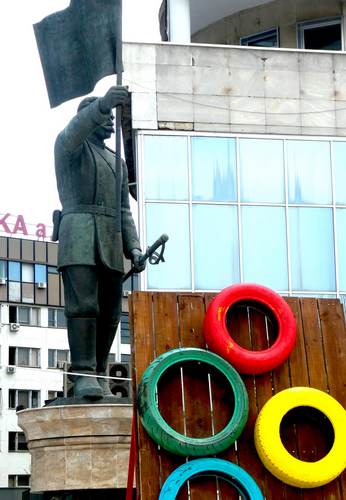
Left: There is even a monument of Josef Stalin, a
most hated Russian despot!
Right: Here also stands the
brothers Cyril and Methodius who developed the Cyrillic alphabet.
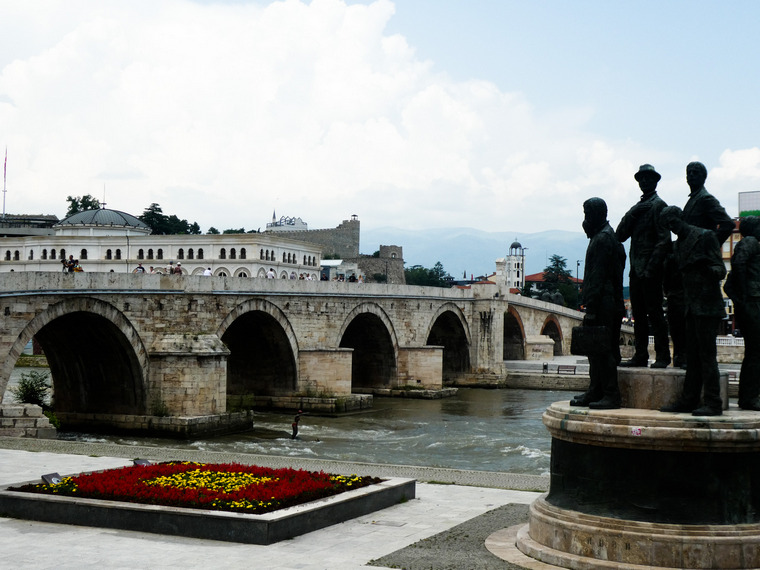
The Stone Bridge
The Stone Bridge, built in the 1400s during the Ottoman
Empire, crossing the Vardar River, and is perhaps is the only original structure
in this square. It tells a bitter political saga of Macedonia marked by
executions and bloodshed, and frequently destroyed either by earthquakes or
bombing.
For one to look at the monuments up close, it will take him at
least half a day going around this large square. I personally enjoyed spending
some time appreciating some of the modern sculptures in the area. There is even
a pirate ship (converted into a restaurant) even if there is no sea in
Macedonia!
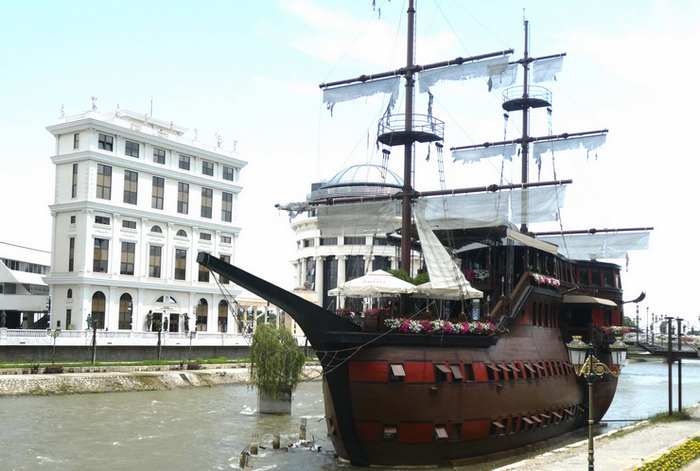
A pirate ship in a country that does not have a sea
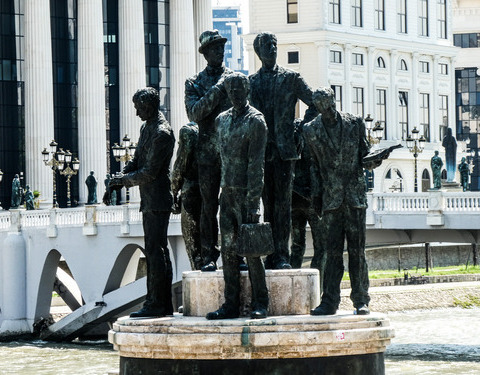
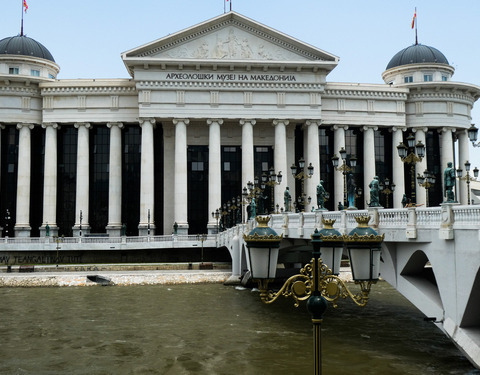
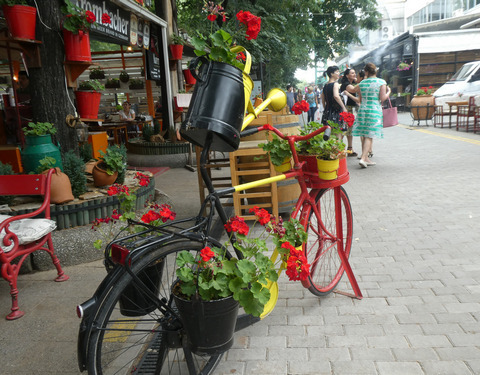
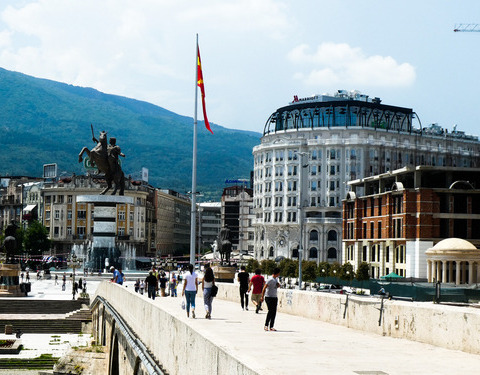
Just walking around the large square, one can either admire, silently criticize, or just view the architecture,
monuments, artworks, restaurants, or just see people moving around.
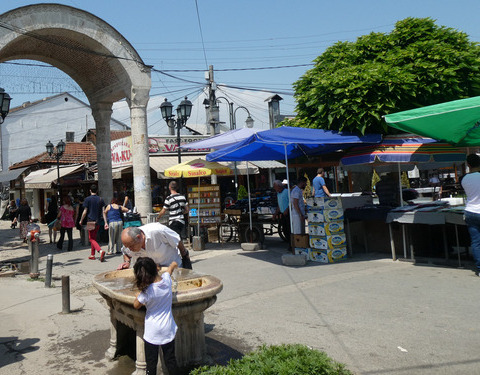
Strolling at Old Town
Matka Canyon
Located 15 kilometers from Skopje, this canyon is about
5,000 hectares and has ten caves ranging between 20 to almost 200 meters with a
depth of up to 35 meters. It is perhaps the most popular outdoor trips in
Macedonia as it offer some amount of adventure and a most peaceful and serene
ecosystem.
Road to Matka Canyon
The long and
winding hike and boat ride in Matka Canyon was more exciting than the major
destination – the Matka Cave. One has to be physically fit to take this tour.
The canyon is steep but the trail is completely safe. The hike towards the area
where our group took the boat into the canyon is a great experience, with the
rocky mountain on one side and a cliff on the other. Along the way, one will be
amazed at the crystal green water down the river bed and spots of lush greenery
lends to the awesome scenery.
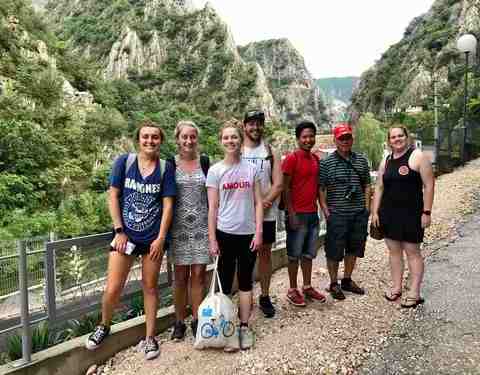
Hiking along the
canyon
There is a nicely-decorated restaurant and a board walk while waiting for your turn to ride the boat. This is one of the best places where you can take astounding pictures of the canyon. There are kayaks for rent at a reasonable price ($10) as an option to the trip along the canyon.
Restaurant and chapel at Matka Canyon
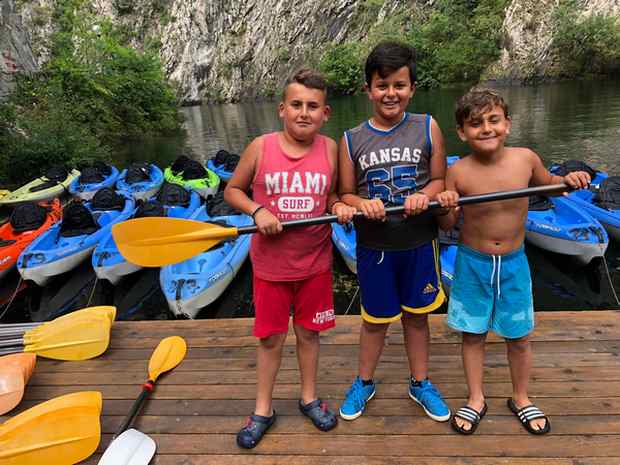
Kids earn some money renting kayaks
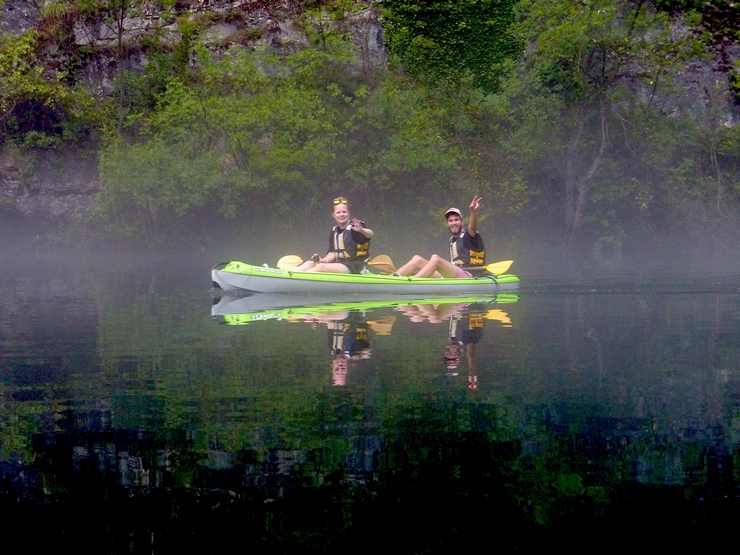
A couple preferred
to rent a kayak instead of going towards the cave.
At one point of the
boat ride, the mist took over and visibility was reduced to only about 20
meters. This lasted for several minutes, but the mist finally cleared as we
approached our destination – a cave. Having seen the spectacular Postojna Cave
in Slovenia and even the Callao Cave in Cagayan province, I was underwhelmed by
the Matka Cave. It took a slippery, although not too long, climb to be able to
reach the cave entrance. This cave is known to be the deepest cave in that part
of the region.
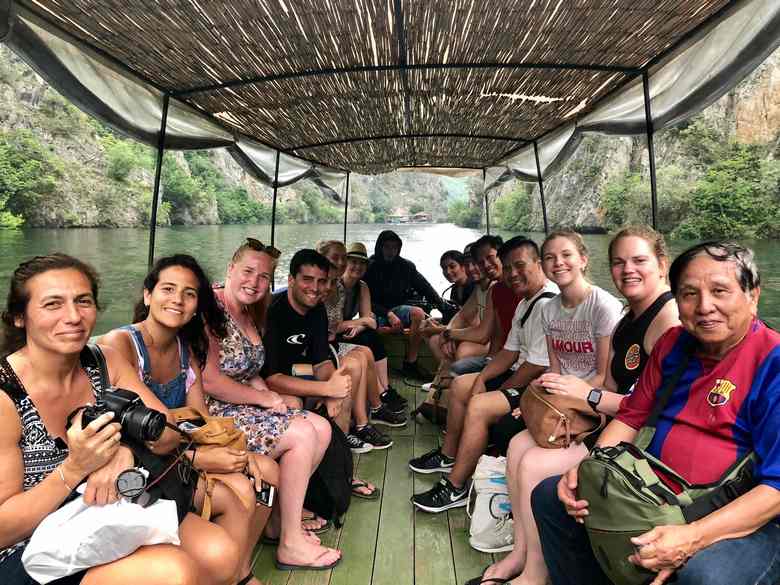
Boarding the boat towards the canyon
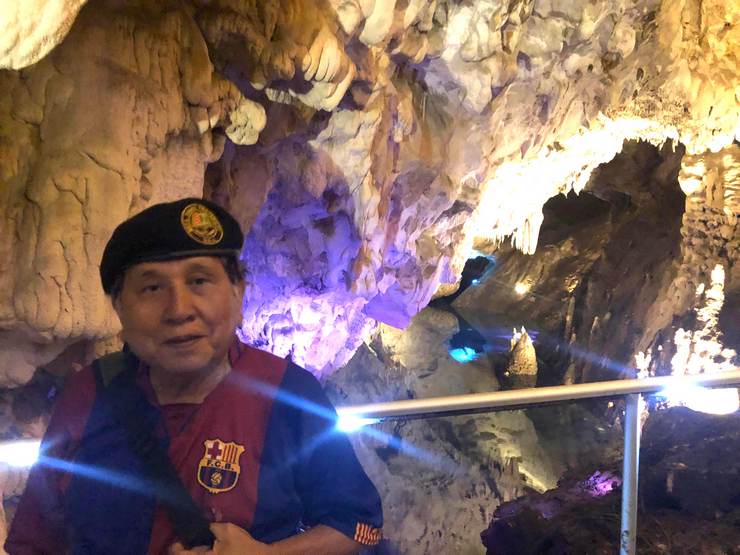
Photo inside one of the many caves in Matka Canyon
Among the must-see sites in Skope is the house of MOTHER TERESA. As
mentioned earlier, she of Albanian parentage but was born in 1910 in Skopje,
Macedonia. She was the youngest of three children.
She spent much of her life helping the
poor. She started at the age of 12, trained for missionary work and went to
India when she was 19. She joined a group of sisters that focused on helping the
poor of Calcutta.
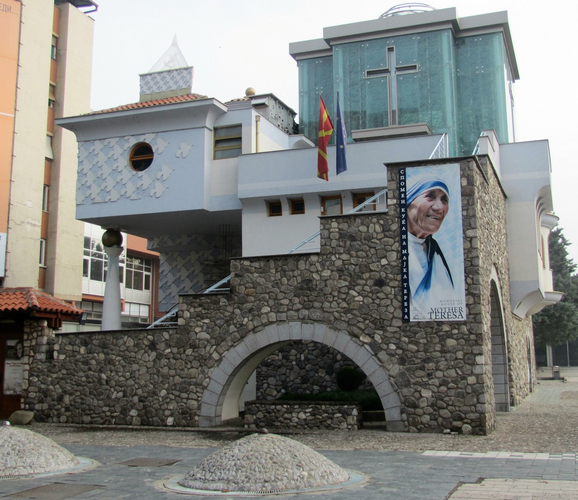
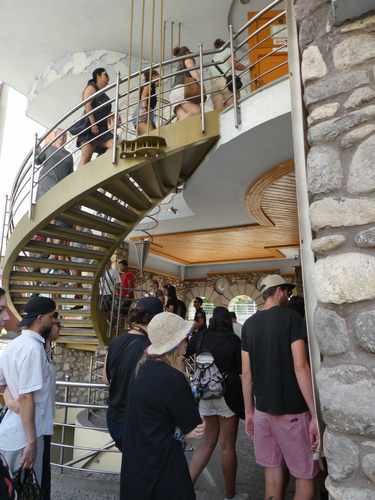
Her home was opened in 2009 as a
museum for everyone to visit.
She started various projects for
rehabilitating slum-dwellers, children's homes, homes for the dying, clinics and
a leper colony, and other charitable endeavors. Mother Teresa's work has been
recognized throughout the world. She was a recipient of several award, the most
prestigious being the 1979 Nobel Peace Prize. In 1971
she received the Pope John XXIII Peace Prize. Mother Teresa died at the age of
87.
Pope John XXIII Peace Prize, 1971
Nobel Peace Prize, 1979
Along the road leading to Bulgaria, we stopped in Tetovo, North Macedonia to visit a mosque. This is called Sarena Mosque, built in the 1400s by two sisters. The interior is unique and absolutely amazing. More than 30,000 eggs were used to prepare the paint and glaze that went into the elaborate decorations, so different from many other mosques I’ve seen in my travels. A major difference between the Sarena mosque and other Ottoman mosques is that this mosque does not have a distinctive exterior dome like the early Constantinople Ottoman Architecture I have seen in Turkey and elsewhere.
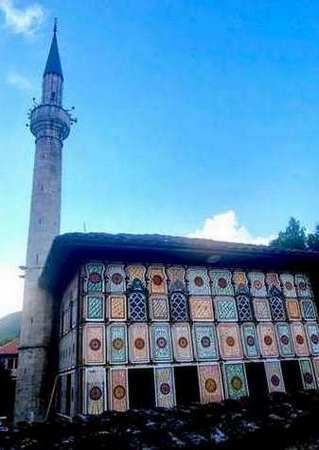
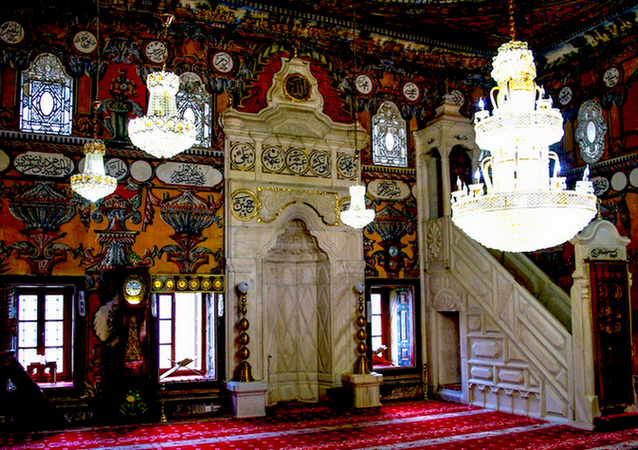
Sarena Mosque built in the 1400s by two sisters
After a brief visit at the
mosque, we once again boarded our bus bound for the next country – Bulgaria. As
usual, I managed to keep an eye on the beautiful Balkan landscape
unfolding before our eyes.
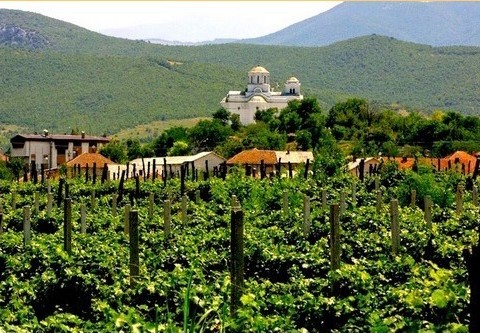
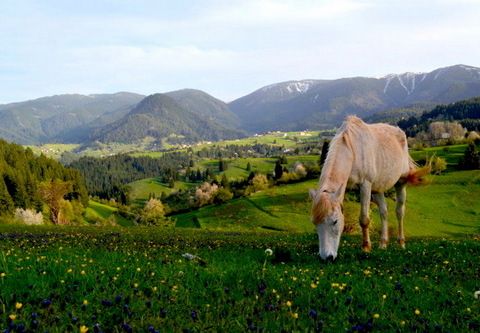
On the road to Bulgaria
NEXT: PART THREE – Bulgaria and Romania. This
will be the last of the series: Our Balkan Adventure.